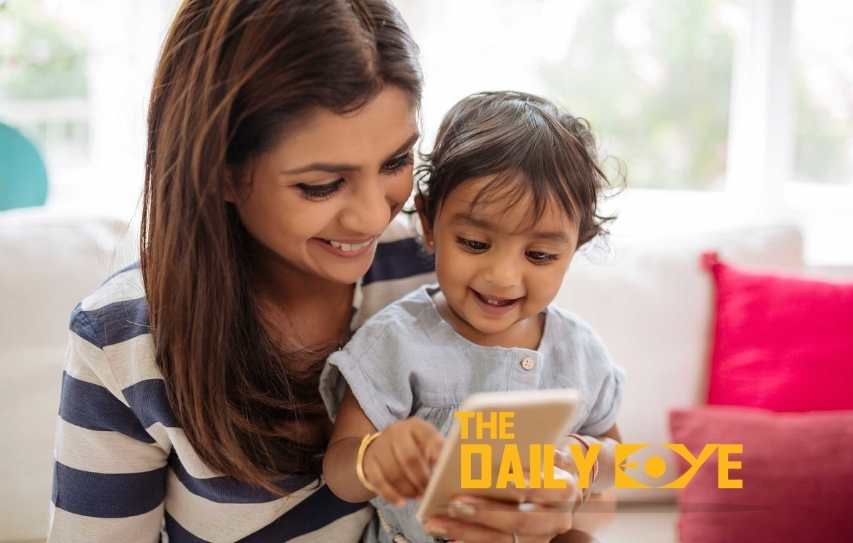
Set Screen Time Rules for Peace at Home
by Sukanya Sudarson September 5 2018, 2:28 pm Estimated Reading Time: 4 mins, 35 secsDinner menu, grocery shopping, cinema in a theatre, weekend plans, speaking to family members, almost everything is just a click away today. Not just for parents, but for children too – the day’s homework, the science project, the solution for the maths problems, gift for a friend’s birthday party and of course the countless online games! We have begun to depend on online solutions for life’s every problems. It’s sad that we spend more time looking at the screen than looking at our loved ones’ faces. Children, being quick-learners, are just modeling their behavior basis their parents and other elders. And then, there is war – to decide the screen time of kids at home.
Parents, today, are struggling to adopt the right amount of screen time and to set the guidelines surrounding it. One of the biggest reasons that they struggle, says Anya Kamenetz an education blogger at National Public Radio, USA, is because of the lack of role models. There are no tried-and-tested Grandma tales about iPad time or screen time. The understanding and the experience of screen time is new for the parents themselves.
For her book The Art of Screen Time: How Your Family Can Balance Digital Media And Real Life, Kamenetz set out to answer the question: What’s the best approach to tech? She surveyed over 500 families; she also interviewed dozens of experts (some parents themselves) who study kids and media to find out best practices. And she boiled everything down to a slogan: Enjoy screens. Not too much. Mostly together.
Here are the excerpts from the many house rules that these ‘expert-parents’ had to say:
Distinguish weekdays and weekends:
.jpg)
Limiting screen time for kids (Popsugar)
Jenny Radesky is one of the lead authors of the most recent revision of the guidelines on media and children from the American Academy of Pediatrics. She stresses, “For the kids in schools, the rule is ‘no media on weekdays’.” They unplug at family dinner and before bed. They have a family movie night on Fridays, which is an example of the principle of ‘joint media engagement’, or simply sharing screen time. On weekends, they allow the kids cartoons, apps and games like Minecraft. But more than just limiting time, says Radesky, "I try to help my older son be aware of the way he reacts to video games or how to interpret information we find online." For example, she tries to explain how he is being manipulated by games that ask him to make purchases while playing.
Sleep time is more important than screen time:
Lauren Hale is a sleep researcher at Stony Brook University in New York. She sums up her findings from over a decade of research: "As kids and adults watch or use screens, with light shining in their eyes and close to their face, bedtime gets delayed. It takes longer to fall asleep, sleep quality is reduced and total sleep time is decreased." Hale is also the mother of two young children. She strictly enforces these rules: No screens in the hour before bed, no screens in the bedroom and no screens as part of the bedtime routine. Never let screen time take away the sleep time of children.
Use the 5-2-1-0 Formula:
Tom Warshawski, a pediatrician in Canada and founder of the Childhood Obesity Foundation there, has been involved in education efforts to get parents to cut back on media time. His materials promote the formula 5- 2- 1- 0. That means five servings of fruits and vegetables a day, no more than two hours of screens, one hour of physical activity, and no sugary beverages. He and his wife, also a doctor, split their pediatrics practice when their son and daughter were young so that one of them could always be home. "We limited TV to an hour on weekdays after all other homework was done," he says.
Check the content yourself before the kids watch it:
Douglas Gentile, a professor at Iowa State University, has two nearly grown daughters. He says when they were younger, he "pretty much followed [American Academy of Pediatrics] guidelines: one hour a day in elementary school, two hours as they got older. But I'm much more strict on content than I am on time." Not surprisingly, he doesn't rely on ratings. Instead, he would watch something himself before allowing his girls to see it.
Parents have the biggest influence on kids on how they respond to things and situations in life, also on how they respond to media. Especially in the first 12 years. Parents should help kids learn to balance screen time and also play a role in sharing the joys of screens with their kids. Kamenetz says, “We can model the use of technology for creation, discovery and connection. We can help kids interpret media that they do use, when we experience it with them”. And this can make all the difference.
If you are a parent, and want to assess your parenting style with regards to use of technology, you can take a few minutes (again, has to be on screen) to check this quiz out. This quiz is based on the work of Erica Austin, Eric Rasmussen and other researchers interviewed in The Art of Screen Time.
Here’s the link: https://www.fullscreen.sg/news/2018/2/27/what-kind-of-screen-time-parent-are-you-take-this-quiz-and-find-out





-173X130.jpg)
-173X130.jpg)


-173X130.jpg)
-173X130.jpg)
-173X130.jpg)